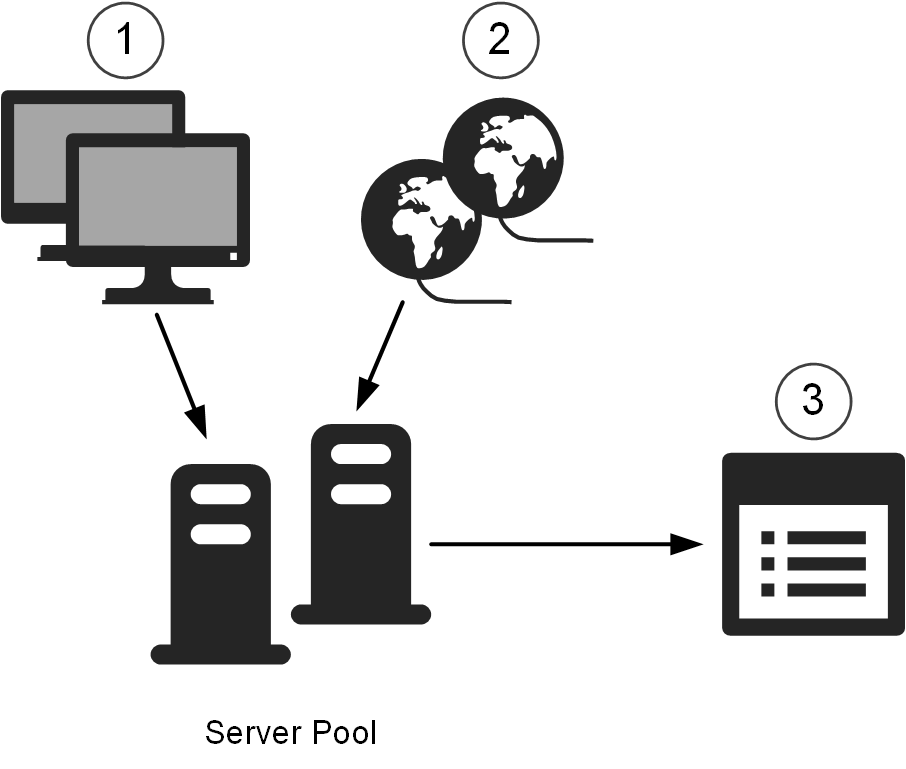Inbound traffic management configuration overview
The process of configuring inbound traffic management consists of the following overall steps.
Figure: Elements in the configuration

- 1
- Host elements represent your servers in the SMC. Add one or more Host elements as Server Pool members to the Server Pool element.
- 2
- NetLinks represent the network connections through which the external IP addresses of the Server Pool are reached. Select one or more NetLink elements as a property of the Server Pool element.
- 3
- To route incoming traffic to the Server Pool members, use the Server Pool element in an a NAT rule or Access rule in the Firewall Policy.
The configuration consists of the following general steps:
- Create Host elements for all servers you want to include in the Server Pool.
- Define a Server Pool element and define settings for inbound traffic management.
It is recommended that each Server Pool offers one type of service. If the servers provide several services, such as HTTP and HTTPS, create a separate Server Pool for each service.
- Make sure that the servers’ public, external IP addresses in the Server Pool properties correspond to their IP addresses in the DNS server.
- Add Access rules to allow the type of traffic that is handled by the Server Pool
- Add NAT rules or Access rules to specify which traffic uses the Server Pool.
NAT rules are the preferred way to enable Server Pool load balancing. For backward compatibility, it is still possible to enable Server Pool load balancing using Access rules.
- (Optional) If you want to send dynamic DNS (DDNS) updates to a DNS server, configure the updates.
- (Optional) If you want to use Server Pool Monitoring Agents, install, configure, and enable them.